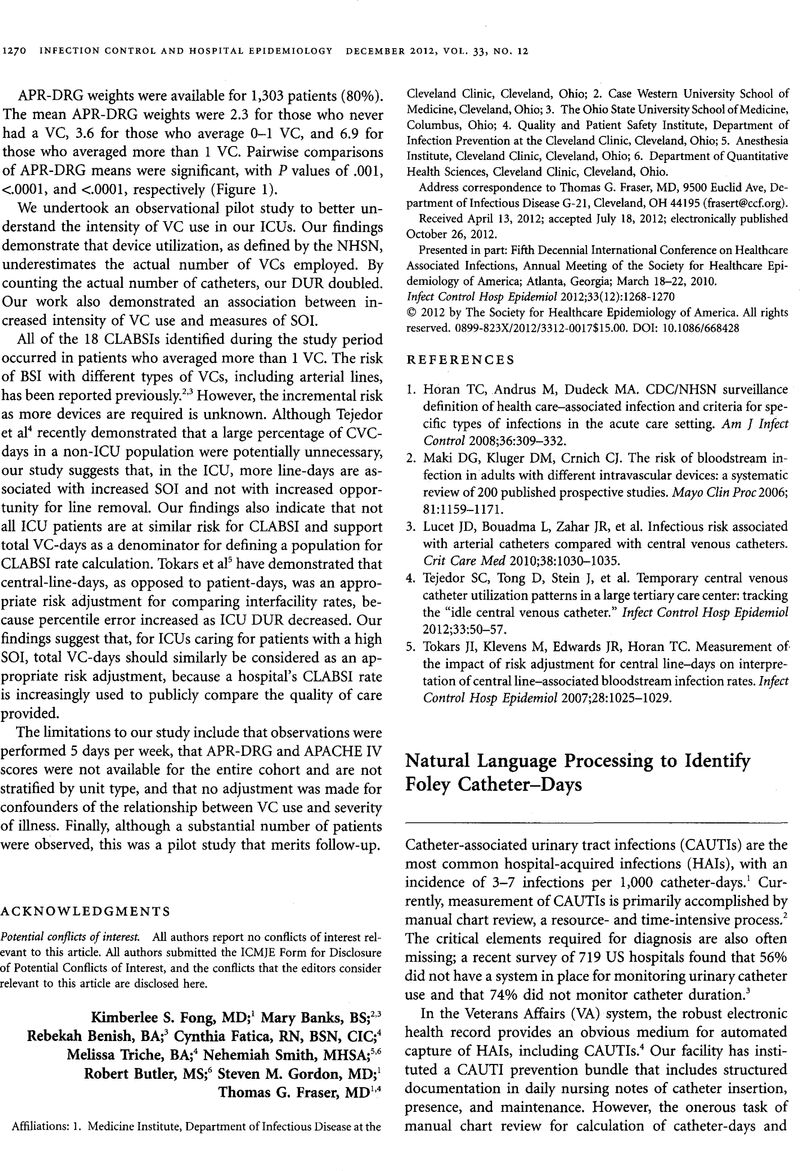Crossref Citations
This article has been cited by the following publications. This list is generated based on data provided by Crossref.
Branch-Elliman, Westyn
Strymish, Judith
Kudesia, Valmeek
Rosen, Amy K.
and
Gupta, Kalpana
2015.
Natural Language Processing for Real-Time Catheter-Associated Urinary Tract Infection Surveillance: Results of a Pilot Implementation Trial.
Infection Control & Hospital Epidemiology,
Vol. 36,
Issue. 9,
p.
1004.
Divita, G.
Carter, M.
Redd, A.
Zeng, Q.
Gupta, K.
Trautner, B.
Samore, M.
and
Gundlapalli, A.
2015.
Scaling-up NLP Pipelines to Process Large Corpora of Clinical Notes.
Methods of Information in Medicine,
Vol. 54,
Issue. 06,
p.
548.
Gundlapalli, Adi V.
Divita, Guy
Redd, Andrew
Carter, Marjorie E.
Ko, Danette
Rubin, Michael
Samore, Matthew
Strymish, Judith
Krein, Sarah
Gupta, Kalpana
Sales, Anne
and
Trautner, Barbara W.
2017.
Detecting the presence of an indwelling urinary catheter and urinary symptoms in hospitalized patients using natural language processing.
Journal of Biomedical Informatics,
Vol. 71,
Issue. ,
p.
S39.
Kang, Min-Jeoung
Dykes, Patricia C.
Korach, Tom Z.
Zhou, Li
Schnock, Kumiko O.
Thate, Jennifer
Whalen, Kimberly
Jia, Haomiao
Schwartz, Jessica
Garcia, Jose P.
Knaplund, Christopher
Cato, Kenrick D.
and
Rossetti, Sarah Collins
2020.
Identifying nurses’ concern concepts about patient deterioration using a standard nursing terminology.
International Journal of Medical Informatics,
Vol. 133,
Issue. ,
p.
104016.



